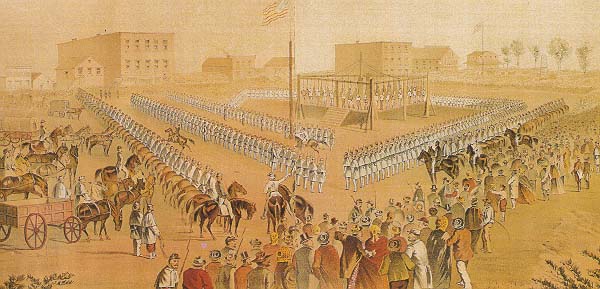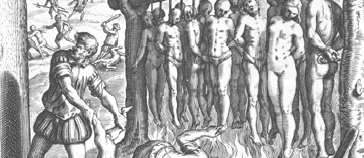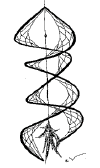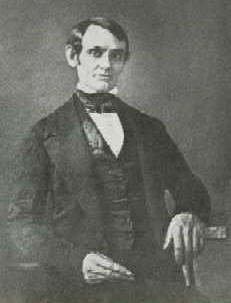|
America's
Disgraceful History Of Military "Trials"
In a recent issue of The
American Enterprise magazine devoted to the War between the States, Victor
Hanson, a visiting professor at the U.S. Naval Academy, defends and makes
excuses for Lincoln's intentional waging of war on Southern civilians. This
included the bombing, pillaging and plundering of their cities and towns,
the burning of their homes, total destruction of farms and livestock, gang
rape, and the killing of thousands, including women and children of all
races. (See Merchant of Terror: General Sherman and Total War
by John Bennett Walters or The Hard Hand of War by Mark Grimsley).
It was all justified, says
Hanson, because General Sherman and his men were supposedly motivated by the
belief that it was necessary "to guarantee the American proposition that
each man is as good as another." Sherman's "bummers," as they were called,
were "political avenging angels" who were offended by racial inequalities in
the South. They were driven by "an ideological furor, to destroy the nature
of Southern aristocracy." The "tyrannical Southern ruling class" needed to
be taught a lesson. (Besides, he writes, "rapes during [Sherman's] march
were almost unknown)."
In reality, neither Sherman
nor his soldiers believed any of these things. (And rapes were not as
"unknown" to the Southern people as they are to Hanson). In the Northern
states at the time, myriad Black Codes existed that prohibited blacks from
migrating into most Northern states and kept them from entering into
contracts, voting, marrying whites, testifying in court against whites
(which invited criminal abuse), or sending their children to public schools.
They were excluded altogether from all forms of transportation or required
to sit in special "Jim Crow sections." They were prohibited from entering
hotels, restaurants or resorts except as servants, and were segregated in
churches, prisons, and even cemeteries. Free blacks in the North in the
1860s were cruelly discriminated against in every aspect of their existence,
and were denied the most fundamental of citizenship rights
Sherman himself certainly
did not believe that "each man is as good as another." For example, in 1862
Sherman was bothered that "the country" was "swarming with dishonest Jews"
(see Michael Fellman, Citizen Sherman, p. 153). He got his close friend,
General Grant, to expel all Jews from his army. As Fellman writes, "On
December 17, 1862, Grant . . . , like a medieval monarch . . . expelled 'The
Jews, as a class,' from his department." Sherman biographer Fellman further
writes that to Sherman, the Jews were "like niggers" and "like greasers
(Mexicans) or Indians" in that they were "classes or races permanently
inferior to his own."
The notion that Sherman's
army was motivated by a belief that all men are created equal is belied by
the further fact that just three months after General Robert E. Lee
surrendered at Appomattox the very same army commenced a campaign of ethnic
genocide against the Plains Indians. In July of 1865 Sherman was put in
charge of the Military District of the Missouri (all land west of the
Mississippi) and given the assignment to eradicate the Plains Indians in
order to make way for the federally subsidized transcontinental railroad.
Like Lincoln, Sherman was a friend of Grenville Dodge, the chief engineer of
the project. He was also a railroad investor and he lobbied his brother,
Senator John Sherman, to allocate federal funds for the transcontinental
railroad. "We are not going to let a few thieving, ragged Indians stop and
check the progress of the railroad," he wrote to General Grant in 1867 (Fellman,
p. 264). As Fellman writes:
[T]he great triumvirate
of the Union Civil War effort [Grant, Sherman and Sheridan] formulated and
enacted military Indian policy until reaching, by The 1880s, what Sherman
sometimes referred to as "the final solution of the Indian problem," which
he defined as killing hostile Indians and segregating their pauperized
survivors in remote places . . . . These men applied their shared
ruthlessness, born of their Civil War experiences, against a people all
three despised, in the name of Civilization and Progress (emphasis added).
Another Sherman biographer,
John F. Marszalek, points out in Sherman: A Soldier's Passion for Order,
that "Sherman viewed Indians as he viewed recalcitrant Southerners during
the war and newly freed people after the war: resisters to the legitimate
forces of an orderly society," by which he meant the central government.
Moreover, writes Marszalek, Sherman's philosophy was that "since the
inferior Indians refused to step aside so superior American culture could
create success and progress, they had to be driven out of the way as the
Confederates had been driven back into the Union."
"Most of the other generals
who took a direct role in the Indian wars, writes Marszalek, "were, like
Sherman, [Union] Civil War luminaries." This included "John Pope, O.O.
Howard, Nelson A. Miles, Alfred H. Terry, E.O.C. Ord, C.C. Augeur, and R.S.
Canby. General Winfield Scott Hancock should be added to this list of
"luminaries." Among the colonels, "George Armstrong Custer and Benjamin
Grierson were the most famous."
Sherman and General Phillip
Sheridan were associated with the statement that "the only good Indian is a
dead Indian." The problem with the Indians, Sherman said, was that "they did
not make allowance for the rapid growth of the white race" (Marszalek, p.
390). And, "both races cannot use this country in common" (Fellman, p. 263).
Sherman's theory of white
racial superiority is what led him to the policy of waging war against the
Indians "till the Indians are all killed or taken to a country where they
can be watched." As Fellman (p. 264) writes:
Sherman planted a racist tautology: Some Indians are thieving, killing
rascals fit for death; all Indians look alike; therefore, to get some we
must eliminate all . . . deduced from this racist tautology . . . the less
destructive policy would be racial cleansing of the land . . .
Accordingly, Sherman wrote
to Grant: "We must act with vindictive earnestness against the Sioux, even
to their extermination, men, women and children." Writing two days later to
his brother John, General Sherman said: "I suppose the Sioux must be
exterminated . . ." (Fellman, p. 264).
This was Sherman's attitude
toward Southerners during the War for Southern Independence as well. In a
July 31, 2024 letter to his wife (from his Collected Works) he wrote that
his purpose in the war was: "Extermination, not of soldiers alone, that is
the least part of the trouble, but the [Southern] people." His charming and
nurturing wife Ellen wrote back that her fondest wish was for a war "of
extermination and that all [Southerners] would be driven like the Swine into
the sea."
With this attitude, Sherman
issued the following order to his troops at the beginning of the Indian
Wars: "During an assault, the soldiers cannot pause to distinguish between
male and female, or even discriminate as to age. As long as resistance is
made, death must be meted out . . ." (Marszalek, p. 379).
Most of the raids on Indian
camps were conducted in the winter, when families would be together and
could therefore all be killed at once. Sherman gave Sheridan "authorization
to slaughter as many women and children as well as men Sheridan or his
subordinates felt was necessary when they attacked Indian villages" (Fellman,
p. 271). All livestock was also killed so that any survivors would be more
likely to starve to death.
Sherman was once brought
before a congressional committee after federal Indian agents, who were
supposed to be supervising the Indians who were on reservations, witnessed
"the horror of women and children under military attack." Nothing came of
the hearings, however. Sherman ordered his subordinates to kill the Indians
without restraint to achieve what he called "the final solution of the
Indian problem," and promised that if the newspapers found out about it he
would "run interference against any complaints about atrocities back East" (Fellman,
p. 271).
Eight years into his war of
"extermination" Sherman was bursting with pride over his accomplishments. "I
am charmed at the handsome conduct of our troops in the field," he wrote
Sheridan in 1874. "They go in with the relish that used to make our hearts
glad in 1864-5" (Fellman, p. 272).
Another part of Sherman's
"final solution" strategy against this "inferior race" was the massive
slaughter of buffalo, a primary source of food for the Indians. If there
were no longer any buffalo near where the railroad traveled, he reasoned,
then the Indians would not go there either. By 1882 the American buffalo was
essentially extinct.
Ironically, some ex-slaves
took part in the Indian wars. Known as the "Buffalo Soldiers," they assisted
in the federal army's campaign of extermination against another colored
race.
By 1890 Sherman's "final
solution" had been achieved: The Plains Indians were all either killed or
placed on reservations "where they can be watched." In a December 18, 2023
letter to the New York Times Sherman expressed his deep disappointment over
the fact that, were it not for "civilian interference," his army would have
"gotten rid of them all" and killed every last Indian in the U.S. (Marszalek,
p. 400).
To Victor Hanson and the
American Enterprise Institute this is the kind of man who "deserves a place
on the roll call of great liberators in human history." Native Americans
would undoubtedly disagree. [We do. Sherman was the Great Genocidal Maniac]
Targeting
Civilians: Lincoln as War Criminal
The latest assault on the
civil liberties of the American people in the name of fighting terrorism is
President Bush's recent decision to use U.S. military tribunals to try
foreigners accused of terrorist attacks and to decide on sentences,
including the death penalty. This is a horrible idea with a horrible
precedent: the largest mass execution in U.S. history.
In 1851 the Santee Sioux
Indians in Minnesota sold twenty-four million acres of land to the federal
government for $1.4 million. By August of 1862 thousands of white settlers
continued to pour into the Indian lands even though none of the money had
been paid to the Santee Sioux. There was a crop failure that year, and the
Indians were starving. The Lincoln administration refused to pay them the
money they were owed, breaking yet another Indian treaty, and the starving
Sioux revolted.
A short "war" ensued, with
Lincoln putting one of his favorite generals, General John Pope, in charge
of federal forces in Minnesota. Pope announced that "It is my purpose to
utterly exterminate the Sioux... They are to be treated as maniacs or wild
beasts, and by no means as people with whom treaties or compromise can be
made." (Similar statements were being made at the time by General William
Tecumseh Sherman, who said that to all Southern secessionists, "why, death
is mercy").
The
Santee Sioux were overwhelmed by the federal army by October of 1862, at
which time General Pope held hundreds of Indian men, women, and children who
were considered to be prisoners of war. The men were all herded into forts
where military "trials" were held, each of which lasted about ten minutes
according to David A. Nichols in Lincoln and the Indians. They were all
found guilty of murder and sentenced to death even though the lack of hard
evidence was manifest and they were not given any semblance of a proper
defense. Most were condemned to death by virtue or the fact that they were
merely present during a battle, during a declared (by the Indians) war.
Minnesota political
authorities wanted the federal army to immediately execute all 303 of the
condemned men. Lincoln, however, was concerned that such a mass execution of
so many men who had so obviously been railroaded would be looked upon in a
bad light by the European powers who, at the time, were threatening to
support the Confederate cause in the War for Southern Independence. His
compromise was to pare the list of condemned down to 39, with a promise to
the Minnesota political establishment that the federal army would eventually
kill or remove every last Indian from the state. As a sweetener to the deal
Lincoln also offered Minnesota $2 million in federal funds.
 On
December 26, 1862, Abraham Lincoln ordered the largest mass execution in
American history in which the guilt of the executed could not be positively
determined beyond reasonable doubt. (The cartel of "Lincoln scholars"
actually praises Lincoln for this act, claiming that it is yet another
example of his humanitarianism and his "culture of life." He may well have
killed 39 innocent people, they say, but it could have been much worse). On
December 26, 1862, Abraham Lincoln ordered the largest mass execution in
American history in which the guilt of the executed could not be positively
determined beyond reasonable doubt. (The cartel of "Lincoln scholars"
actually praises Lincoln for this act, claiming that it is yet another
example of his humanitarianism and his "culture of life." He may well have
killed 39 innocent people, they say, but it could have been much worse).
This is not to suggest that
the Bush administration, with its decision to use military tribunals instead
of civil courts to try suspected terrorists, will exercise the kind of
tyrannical behavior that occurred during the Lincoln administration, but it
could. Military men who are influenced by the passions of war are not
suitable as unbiased judges. The administration should use the current
crisis as an opportunity to speed up our sclerotic legal system and
prosecute accused terrorists under the normal rules of trials that are
consistent with the U.S. Constitution.
Copyright 2001
LewRockwell.com
Thomas J. DiLorenzo is
professor of economics at Loyola College in Maryland. His book, The Real
Lincoln: A New Look at Abraham Lincoln, His Agenda, and an Unnecessary War
Republished with permission
of the author.
See also:
Lincoln Targeting Civilians Is a War Crime
White Eagle Soaring: Dream Dancer of the 7th Fire
Index of DreamCatchers
However You Spell DreamCatcher
However you've spelled Dream Catcher, these REAL Dream Catchers are
natural magic from Creator Direct (Manidoog).

Dream Catchers' links
This is a crazy world. What can be
done? Amazingly, we have been mislead. We have been taught that we can
control government by voting. The founder of the Rothschild dynasty, Mayer
Amschel Bauer, told the secret of controlling the government of a nation
over 200 years ago. He said, "Permit me to issue and control the money of
a nation and I care not who makes its laws." Get the picture? Your freedom
hinges first on the nation's banks and money system. That's why we
advocate using the
Liberty Dollar, to understand the
monetary and banking system. Freedom is connected with
Debt Elimination for each individual. Not
only does this end personal debt, it places the people first in line as
creditors to the National Debt ahead of the banks. They don't wish for you
to know this. It has to do with recognizing WHO you really are in
A New Beginning: A Practical Course in Miracles.
You CAN
take
back your power and
stop volunteering to pay taxes to the collection
agency for the BEAST. You can take back that which is yours,
always has been yours and use it to pay off your debts. And you can send
others to these pages to discover what you are discovering.
Get
a course to promote your business online, explode your sales
Get
software to promote your business online in less time
 Get
software to streamline your business and run it hands free. Get
software to streamline your business and run it hands free.
Disclaimer: The
statements on www.real-dream-catchers.com have not been evaluated by the FDA.
These dream catchers are not intended to diagnose nor treat nor cure any
disease or illness
© 2007, Allen Aslan Heart / White Eagle Soaring of the Little Shell Pembina Band, a
Treaty
Tribe of the Ojibwe Nation
|





 As
a Captain in the Black Hawk War, Lincoln claimed to have had no success
which gave him so much satisfaction. Lincoln maintained a racial attitude
guided by white supremacist beliefs while he simultaneously opposed slavery
on humanitarian grounds. As long as the pendulum swings historians continue
to miss the mark, and Lincoln's racial beliefs remain an enigma. Lincoln's
thoughts on race were not unique; they were thoughts shared by most
Northerners at the time. In this sense he ceases to be the visionary we have
thought him, and his racial beliefs reveal themselves to be nothing special.
As
a Captain in the Black Hawk War, Lincoln claimed to have had no success
which gave him so much satisfaction. Lincoln maintained a racial attitude
guided by white supremacist beliefs while he simultaneously opposed slavery
on humanitarian grounds. As long as the pendulum swings historians continue
to miss the mark, and Lincoln's racial beliefs remain an enigma. Lincoln's
thoughts on race were not unique; they were thoughts shared by most
Northerners at the time. In this sense he ceases to be the visionary we have
thought him, and his racial beliefs reveal themselves to be nothing special.

 On
December 26, 1862, Abraham Lincoln ordered the largest mass execution in
American history in which the guilt of the executed could not be positively
determined beyond reasonable doubt. (The cartel of "Lincoln scholars"
actually praises Lincoln for this act, claiming that it is yet another
example of his humanitarianism and his "culture of life." He may well have
killed 39 innocent people, they say, but it could have been much worse).
On
December 26, 1862, Abraham Lincoln ordered the largest mass execution in
American history in which the guilt of the executed could not be positively
determined beyond reasonable doubt. (The cartel of "Lincoln scholars"
actually praises Lincoln for this act, claiming that it is yet another
example of his humanitarianism and his "culture of life." He may well have
killed 39 innocent people, they say, but it could have been much worse).

 Get
software to streamline your business and run it hands free.
Get
software to streamline your business and run it hands free.